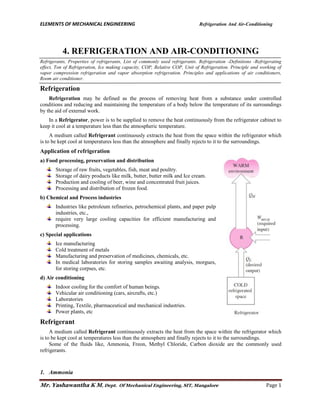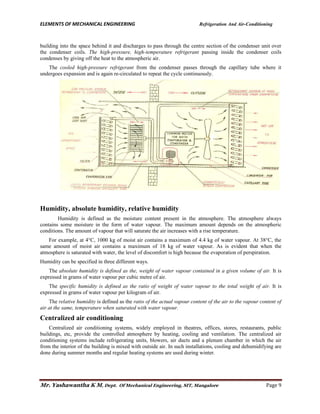Refrigeration and air conditioning are discussed. Key points:
- Refrigeration is the process of removing heat from a substance to lower its temperature below surroundings. Refrigerants like ammonia and freon are used.
- Applications include food preservation, chemical/process industries, air conditioning, and medical use.
- A refrigeration system consists of an evaporator to absorb heat, a compressor to circulate refrigerant, a condenser to reject heat, and an expansion device.









